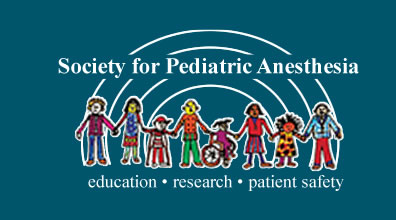Review of Anesthesia and Analgesia February 2014
By Elizabeth S. Yun, MD
University of Wisconsin School of Medicine
Madison, WI
The February 2014 issue of Anesthesia and Analgesia presented four original research articles with new perspectives on malignant hyperthermia (MH). This review briefly summarizes these articles. In addition to these four empirical reports, this issue also included a literature review DNA Testing for Malignant Hyperthermia: The Reality and the Dream that reviewed various aspects of DNA testing in MH patients.
The first article, Malignant Hyperthermia in Children: An Analysis of the North American Malignant Hyperthermia Registry by Nelson et al used the North American Registry (NAMHR) to determine age related clinical characteristics of acute malignant hyperthermia in the pediatric population.
This retrospective analysis examined subjects 18 years and younger in the NAMHR database with a MH clinical grade score above 35 (indicated a very likely to almost certain MH event as per the scoring scale proposed by Larach et al in 1994). The subjects were split into three age cohorts: 0-24 months, 25 months to 12 years and 13 to 18 years.
For each age group, the NAMHR data was analyzed by examining three categories: preoperative patient demographics and risk factors, clinical characteristics of the acute MH event and post event characteristics and outcomes. The results for preoperative issues showed that for all three age groups the initial symptoms were tachycardia and hypercarbia. The oldest age group had a higher maximum temperature at a faster rate and a higher potassium level compared to the other groups. The youngest group presented with lower pH and higher lactic acid levels, perhaps due to less muscle reserve to buffer the occurrence of anaerobic metabolism during an acute MH event. The middle age group initially presented with masseter muscle spasm and had a more heterogeneous response. Treatment was similar in all ages and the incidence of recrudescence did not differ.
This study showed a higher death rate compared to others but that may be due to differences in methodological data collection. The authors acknowledged the limitations of the study: data were reported retrospectively, cases were populated from different sources and that not all MH cases in North America were reported to the database. Despite these issues, the authors felt that the analysis of the available data demonstrated age related differences in acute MH events.
The second paper, Functional Characterization of two Known Ryanodine Receptor Mutations Causing Malignant Hyperthermia by Schiemann et al, examined the ryanodine receptor for mutations in the gene that might be associated with MH.
Amino acid changes in the ryanodine (RYR1) receptor have been identified in MH families. More than 300 variants in the RYR1 gene have been linked to MH. To classify a mutation as causative by the European Malignant Hyperthermia Group, it must be segregated in two unrelated families and the mutation must lead to abnormal calcium release in functional assays compared to the wild type RYR1. With this criteria, thirty one variants have been identified. At this time most patients are diagnosed with the in vitro contracture test (IVCT). However, patients carrying a causative mutation do not need to undergo this invasive test.
The authors found three New Zealand patients with likely MH reactions. Patient AII:1, a 15 year old had an almost certain MH episode, Patient BI a 6 year old, had a very likely MH reaction and Patient CII:3, a 30 year old had a somewhat less likely reaction. Blood and tissue samples were obtained from all 3 patients after written consent. DNA findings noted that 2 of the patients’ families had a known MH mutation; R2355W and the third had another more recently identified MH associated variant known as V2345M. Both of these were not found in greater than 100 MH negative families thus making it more likely these are potential mutations instead of a polymorphism. Various functional assays on B lymphoblastoid cells from the families were used to compare amount of calcium released on stimulation between the new variants and the wild type RYR1 gene.
These functional studies showed that the R2355W and the V2345M variant had increased calcium release compared to the wild RYR1 gene. Based on these findings the authors concluded that the R2355W fulfilled the criteria for a causative mutation and the V2345M needed to be identified in more families before meeting the criteria.
The third article, Malignant Hyperthermia in Canada: Characteristics of Index Anesthetics in 129 Malignant Hyperthermia Susceptible Probands by Riazi et al, looked at the epidemiologic characteristics of Canadian patients with confirmed MH susceptibility. They reviewed data of adverse anesthetic events in the Toronto Malignant Hyperthermia Investigation Unit (MHIU) reported from 1992-2011.
They selected 129 patients that were referred to the MHIU database who survived the event and were diagnosed as MH susceptible by the caffeine-halothane contracture test. They examined each event for demographic, risk comorbidities, anesthetic trigger and duration of anesthetic, clinical signs including clinical score, dantrolene use and PACU records, complications of events, laboratory findings, CHCT results and RYR1 gene screening on consenting adults and analyzed the data for associations between complications, clinical signs and dantrolene treatment. They found that the most frequent clinical signs were hyperthermia, tachycardia and hypercarbia, although the most common initial sign was masseter muscle spasm. MH tended to occur in younger males. Succinylcholine alone triggered in 15.5% of patients, succinlycholine and volatile anesthetics together in 39.5% and volatile anesthetics alone in 45% of patients. Increasing length of time between first clinical sign and dantrolene treatment was associated with a higher complication rate. Renal dysfunction was the most common complication after an MH event.
The authors noted several limitations with this study. It was a retrospective study limited by data availability and the inclusion of only patients who survived their MH event and had undergone a CHCT, lack of universal surveillance for outcomes, variability in treatment, diagnostic and management protocols. The database reflected a long time frame during which medical care had undergone significant changes. In summary the authors agreed with previous studies that early diagnosis and dantrolene treatment reduce complications of MH
The final article, Anesthetic Drugs and Onset of Malignant Hyperthermia by Visoiu et al, hypothesized that the time between beginning of anesthetic administration and recognition of first signs of MH (defined as MH onset time) depended on the inhaled anesthetic used.
They reviewed 477 cases from the NAMHR from 1/1/87-1/1/2010 that met inclusion criteria of the reporting clinician’s judgment of possible/fulminant MH episode, documentation of time the anesthetic began and first signs of MH. The MH onset times were defined for 4 groups: inhaled anesthetic and succinylcholine (257 patients), inhaled anesthetic only (199), succinylcholine only (14) and neither (7 patients).
Overall, the results showed that in 394 cases where one inhaled anesthetic was recorded, halothane had the shortest MH onset time of all agents and a shorter onset in the presence of succinylcholine. When no succinylcholine was used, halothane’s onset time was shorter than isoflurane and desflurane and similar to sevoflurane. Sevoflurane also had a shorter onset time when succinylcholine was used compared to isoflurane and desflurane. Masseter spasm was the one clinical sign associated with fastest MH onset time. When no masseter muscle spasm was present, onset time was the same with or without succinylcholine.
In the 146 cases where no succinylcholine was used and no masseter spasm was present, halothane had a faster onset time compared to isoflurane and desflurane. Sevoflurane also had a faster time compared to isoflurane. In summary, the fastest MH onset times occurred with the use of both inhaled anesthetic and succinylcholine with halothane having the fastest onset time of all the agents. Masseter muscle spasm was the clinical sign that had the fastest onset time. The authors noted that after 1998 when the use of halothane and succinylcholine was less reported, the onset of MH occurred later in the course of a general anesthetic.
References
- Stowell KM. DNA Testing for Malignant Hyperthermia: The Reality and the Dream. Anesth Analg 2014: 118:397-406
- Nelson P, Litman RS. Malignant Hyperthermia in Children: An Analysis of the North American Malignant Hyperthermia Registry. Anesth Analg 2014: 118:369-374
- Larach MG, Localio AR, et al. A Clinical Grading Scale to Predict Malignant Hyperthermia Susceptibility. Anesthesiology 1994; 80:771-779
- Schiemann AH, Paul N, et al. Functional Characterization of 2 Known Ryanodine Receptor Mutations Causing Malignant Hyperthermia. Anesth Analg 2014; 118:375-380
- Riazi S, Larach MG, et al. Malignant Hyperthermia in Canada: Characteristics of Index Anesthetics in 129 Malignant Hyperthermia Susceptible Probands. Anesth Analg 2014; 118:381-387
- Visoiu M, Young MC, et al. Anesthetic Drugs and Onset of Malignant Hyperthermia. Anesth Analg 2014; 118:388-396


